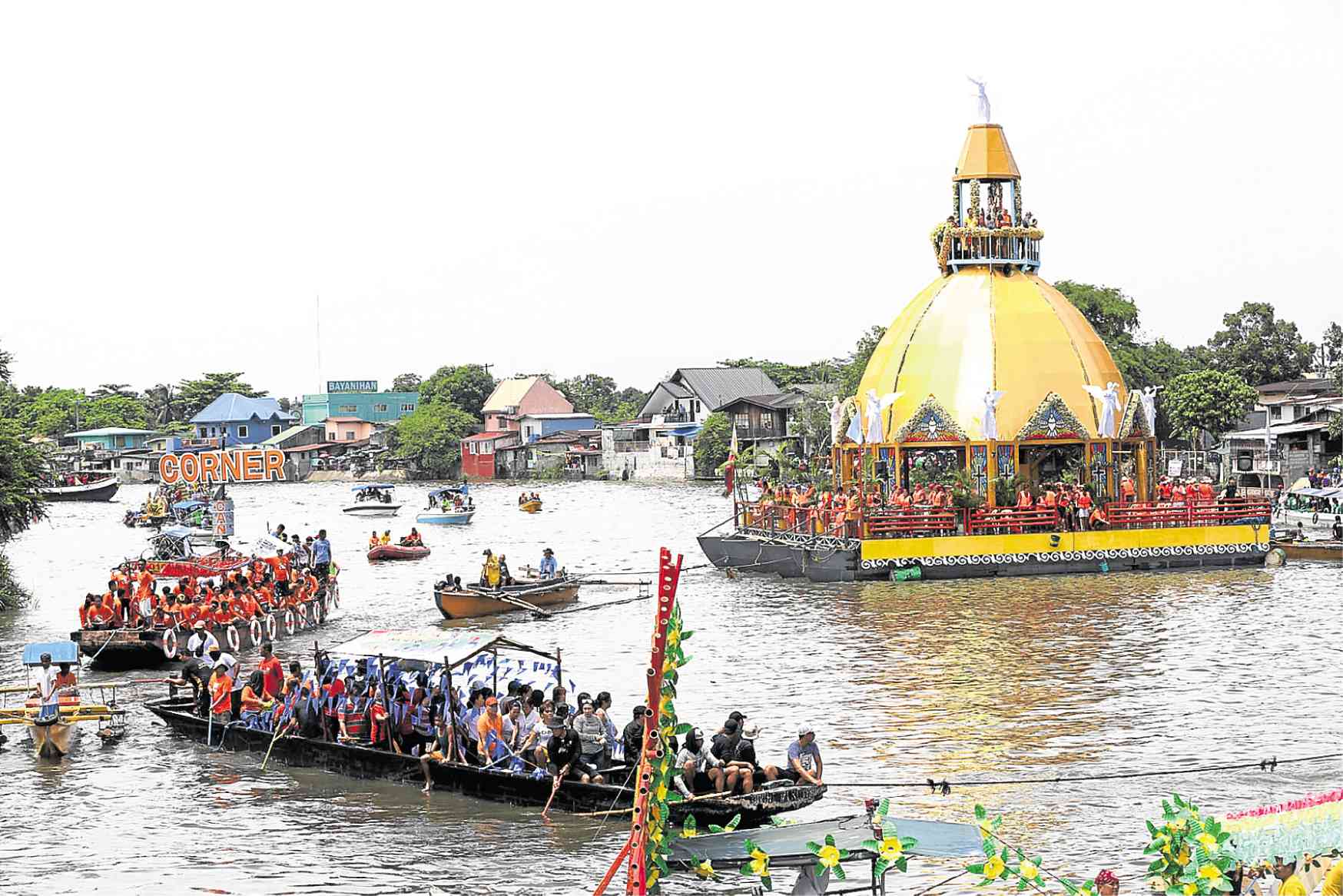
PROCESSION In this 2017 photo, residents and devotees join the fluvial procession honoring the Holy Cross of Wawa along Bocaue River in Bulacan province. —NIÑO JESUS ORBETA
BOCAUE, Bulacan, Philippines — The town’s deteriorating river will be revived, residents say, as they remember the Pagoda tragedy where 270 people died during a fluvial procession 26 years ago.
Devotees are expected to join the river procession on Sunday when a floating pagoda carrying a venerated wooden cross, called the “Mahal na Poon ng Krus sa Wawa,” will sail around the Bocaue River.
This year’s three-story high wooden pagoda is reinforced by metal braces to make it sturdy and ensure the safety of those who will join the procession.
The grand procession takes place on the first Sunday of July and is preceded by a nine-day novena as part of the tradition.
On Wednesday, Mayor Joni Villanueva-Tugna said she would push for a river cleanup to pay tribute to the 270 people who died on July 2, 1993, when the pagoda collapsed due to excessive weight.
The cross-bearing pagoda never sailed again for 21 years until residents and businessmen revived the procession in 2014.
Devotion
Residents said the devotion to the Krus sa Wawa started in the 1800s when a wooden cross was found in the river amid a strong current whipped up by a typhoon.
They said the cross came from the town’s old church that had been gutted by fire. The cross has since been kept in a riverside church in Barangay Bambang here.
Tugna has been spearheading the rehabilitation of the river since 2016 through the “Bocaue River Wonder” program.
“The best way to remember those killed in the 1993 procession is through reviving and cleaning the Bocaue River,” Tugna said during the pagoda launch on June 28.
She said the local government would tie up with Pasig City to revive the river as recommended by Mayor Vico Sotto, who joined the launch.
The 125-kilometer Pasig River, once considered “biologically dead,” has been revived through the cleanup efforts of the local government and nongovernmental organizations.
Clean, safe
Various fishermen’s groups in this town have been regularly cleaning the Bocaue River, removing domestic waste and water hyacinths that clog the waterway.
Jen Santos, program director of Bantay Kalikasan Movement, said the Bocaue River should not only be known as the venue of Pagoda procession but also as “a clean and safe river.”
She said waste and garbage from residential areas along the riverbank largely contribute to the pollution. The river is the catchbasin of waste from the towns of Marilao and Sta. Maria, and City of Meycauayan in Bulacan, and other upper areas in Rizal province and Quezon City.
During high tide, domestic waste from Manila Bay flows to the river.
Emelita Lingat, head of provincial environment and natural resources in Bulacan, said 2,000 “bokashi” balls were thrown into the Bocaue River in April as part of its rehabilitation.
Bokashi is a technology used in cleaning and preventing foul odor of rivers in Japan.
Lingat said water samples were taken before the balls were thrown and new tests would again be conducted after three months.
Dinia Gomez, Bocaue municipal environment and natural resources officer, said they expected water quality in the river to improve. She said bokashi ball production would be a major project of the Sangguniang Kabataan in Bocaue.

